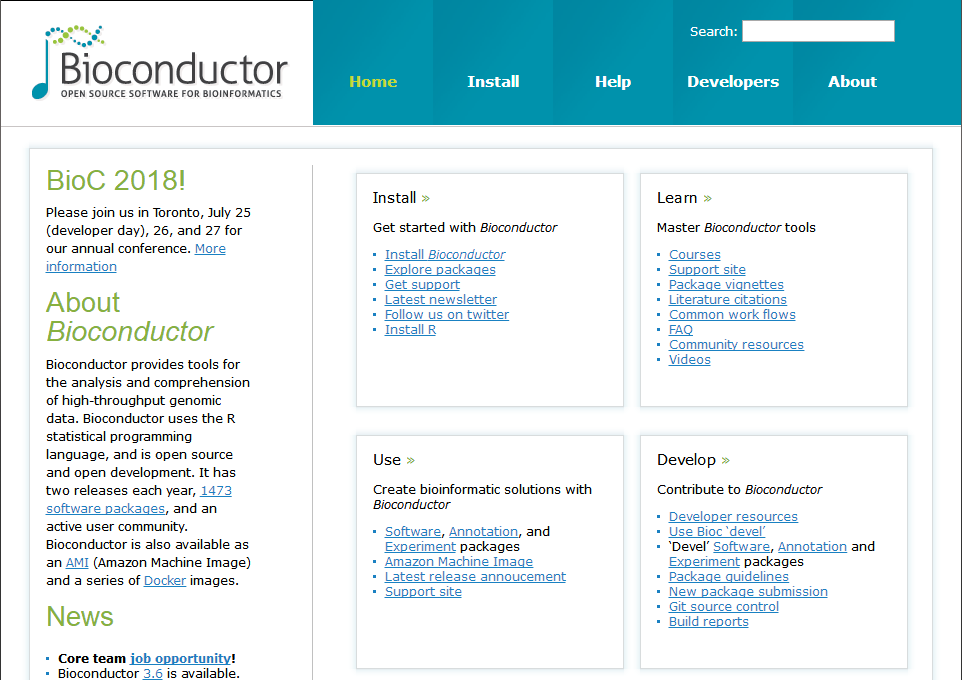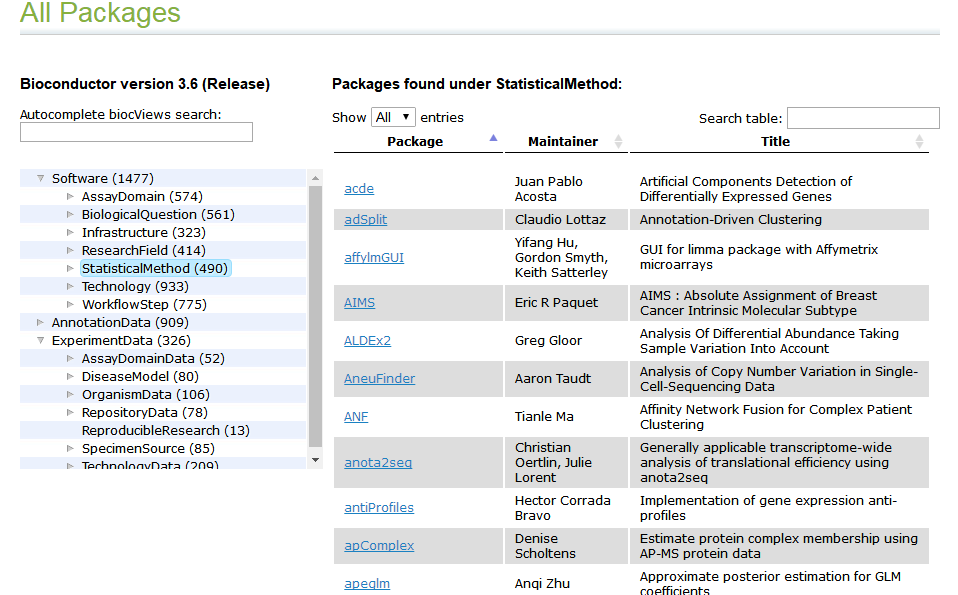Table of Contents

There are many great open sources website which contains tutorials, softwares, tools of bioinformatics field to help you get a great understanding of it and make effectively use of related softwares/tools.
Bioconductor
Bioconductor is an open source, open development software project to provide tools for the analysis and comprehension of high-throughput genomic data. It is based primarily on the R programming language.

The Bioconductor release version is updated twice each year, and is appropriate for most users. There is also a development version, to which new features and packages are added prior to incorporation in the release. A large number of meta-data packages provide pathway, organism, microarray and other annotations.
The Bioconductor project started in 2001 and is overseen by a core team, based primarily at Roswell Park Cancer Institute, and by other members coming from US and international institutions.
There are various kinds of R-based packages:

Recommended books
It’s notoriously difficult to find any books on bioinformatics itself that cater well for all of those coming from computing, from mathematics and from biology backgrounds. The few textbooks available in the field tend to be eyewateringly expensive as well. Suggested reading has been divided into books of general interest, those best suited to people coming from a computational/mathematical background and books for biologists interested in bioinformatics.
The Details can be found in these Recommended books
Blogs/website
- STHDA: Statistical tools for high-throughput data analysis.
- bioinformatics.org
- The BIO-WEB: Resources for molecular and cell biologists.
- Easybioinfo: may use google translate.
- ColorBasePair: online bioinformatics resources.
International Society for Computational Biology (ISCB)
The International Society for Computational Biology has web links to study programs, online courses in computational biology as well as job postings.
International Society for Computational Biology
Careers: How can I become a bioinformatics practitioner?
Starting from scratch:
If you are a high school student / sixth former, think about taking an interdisciplinary computational biology or bioinformatics bachelor’s degree of the sort offered at, for example, Manchester University in the UK or UPenn in the States. Don’t worry if you can’t find a place on such a course or there isn’t one nearby; perhaps the best way to approach this subject is from two sides. Do a bachelor’s degree in one area while taking a healthy interest in the other – or (if you can afford to) complement a first degree in one part of the discipline with a second degree in the second. If you already have a degree in a biological discipline there are similar Master’s courses – both interdisciplinary (e.g. Birkbeck’s in London) and conversion type courses – for biologists or others to learn computer science, for example. If you are currently doing a computer science or biology PhD, try to take advantage of the opportunity to take courses in the “other” discipline.
From a background in biology:
Biologists should take as many real computing courses as you can. It’s important not just to learn a programming language, but also to learn the discipline of computing, to structure and document your work in a rigorous way. What courses you take might be directed by the kind of work you are interested in doing when you graduate – whether you see yourself supporting bioinformatics applications or building them. For the former you need all-round familiarity with the programs themselves and the hardware and software needed to run them – plus your existing understanding of biology. For the latter you need to learn a structured programming language and the principles of good program design – plus the ability to talk to and understand biologists.
From a background in computational/quantitative science:
There is the simple value of doing some “proper” biological laboratory science. There have been many talks during which a bioinformatics “scientist” describes in great detail how his – it’s usually “his” – application of a trendy mathematical tool offers a supposed insight into a (sometimes supposed) biological problem. But, nine times out of ten this method will never be so much as sneezed on by a practising biologist. Quantitative scientists sometimes talk about their interest in studying some aspect of “God’s mind”. Biologists, in contrast, are interested in “Mother Nature”. You might meditate on God in the hope of some revelation, but to understand Nature you have to meet her in the flesh. You are as likely to be useful to biologists working in isolation at the keyboard as you are to conceive with your clothes on. Desk-bound bioinformaticians have written code that has turned out to be popular with biologists, but almost always because they have collaborated with biologists.
More detailed information can be found here